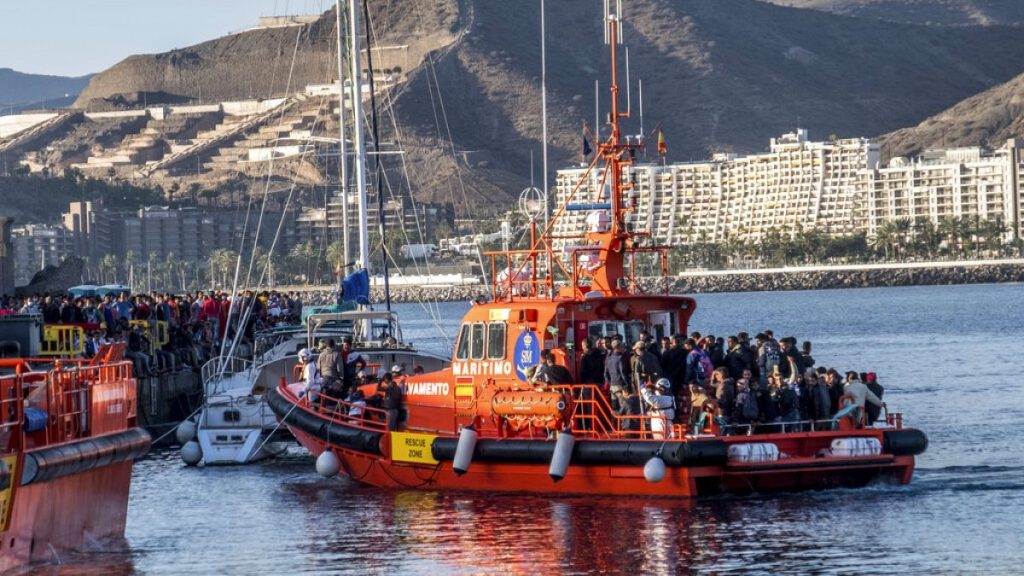In 2024, the European Union witnessed a significant decline in irregular migration, reaching a three-year low according to Frontex, the EU’s border agency. Preliminary data indicates approximately 239,000 irregular border crossings, marking a 38% decrease compared to 2023 and the lowest count since 2021, a year also influenced by the COVID-19 pandemic. This downward trend was predominantly observed in the central Mediterranean and Western Balkans routes, with decreases of 59% and 78% respectively. The drop in central Mediterranean crossings is attributed to increased EU support for Tunisian and Libyan authorities, who have intensified efforts to intercept migrant boats. However, this collaboration has drawn criticism from NGOs, who accuse the Libyan coastguard of employing violent tactics during interceptions, prompting calls for the EU to reassess its support. Meanwhile, the decline in Western Balkan crossings is linked to the EU’s work with regional countries to align visa policies, creating a more harmonized and controlled migration flow.
While the overall figures depict a positive trend, experts urge caution against interpreting them as a complete picture of irregular migration. The data does not account for undetected crossings, nor does it differentiate between economic migrants seeking better opportunities and asylum seekers fleeing persecution or conflict. This lack of granular detail raises concerns about the true extent of asylum seekers attempting to enter Europe and the potential for overlooking genuine humanitarian needs. Furthermore, the data fails to capture the human cost of irregular migration, with over 2,300 reported deaths or disappearances in the Mediterranean in 2024 alone. The International Organization for Migration estimates significantly higher figures since 2014, underscoring the persistent dangers faced by migrants undertaking perilous journeys.
Despite the overall decline in irregular migration, certain regions experienced an upsurge in arrivals. The Canary Islands, located off the coast of northwestern Africa, saw an 18% increase in irregular crossings during 2024. A more dramatic surge occurred along Europe’s eastern land borders, particularly with Russia and Belarus, where arrivals nearly tripled. This rise has fueled accusations, particularly from Poland, that Russia is instrumentalizing migration to destabilize Europe, adding a geopolitical dimension to the migration issue.
The decrease in irregular migration across the central Mediterranean route is primarily attributed to EU support provided to Tunisian and Libyan authorities. This support has facilitated increased interception of migrant boats attempting the crossing to Europe. However, this collaborative approach has been fraught with controversy due to accusations of human rights abuses by the Libyan Coast Guard. NGOs operating in the Mediterranean have documented instances of violence and mistreatment of migrants during interceptions, leading to calls for the EU to suspend its financial and material support. This presents a complex dilemma for the EU, balancing the need to manage migration flows with the imperative to uphold human rights principles.
In contrast to the central Mediterranean, the Western Balkans route witnessed a significant reduction in irregular migration, mainly attributed to the EU’s efforts to harmonize visa policies with countries in the region. By aligning visa regulations, the EU aims to create a more controlled and regulated migration flow, reducing the incentive for irregular crossings. This approach underscores the importance of cooperation and policy alignment in managing migration effectively. However, it also raises questions about the potential impact on genuine asylum seekers who may face more barriers to reaching Europe through regular channels.
The overall decline in irregular migration to the EU represents a significant development, yet it is crucial to acknowledge the data’s limitations. The official figures capture only detected crossings, overlooking those that go undetected. Moreover, they do not distinguish between economic migrants and asylum seekers, obscuring the proportion of individuals seeking refuge from persecution or conflict. This lack of nuanced data hinders a comprehensive understanding of migration patterns and the specific needs of different migrant groups. Additionally, the focus on border crossings often overshadows the human tragedy unfolding in the Mediterranean, where thousands continue to perish during perilous journeys. These complexities highlight the need for more comprehensive data collection and analysis to inform effective and humane migration policies.

